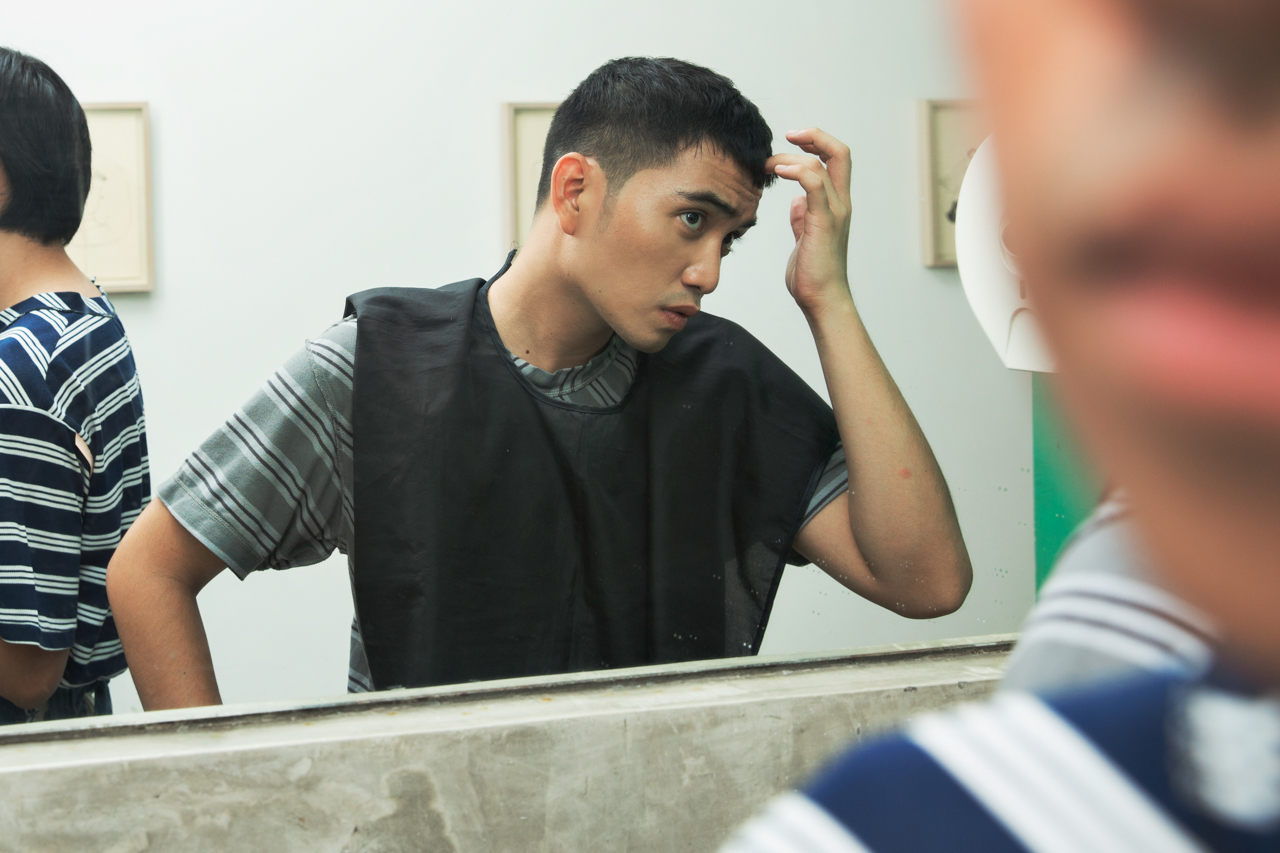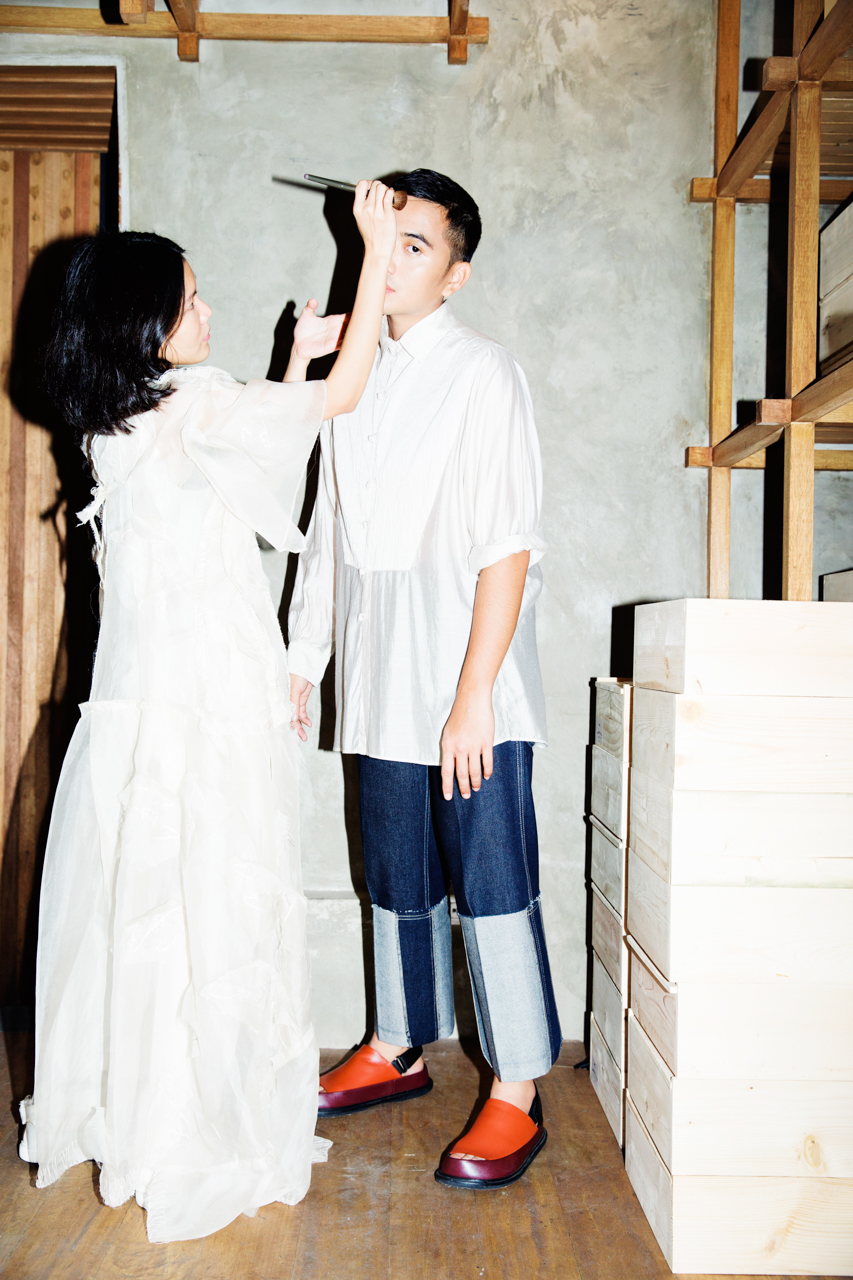Carl Jan Cruz can’t set himself, the designer, apart from the brand, because the fashion he creates has been embedded in him from the get-go
He may have achieved a lot already at 25, but Carl Jan Cruz isn’t immune to the grip of the quarter-life crisis. “Is that what they call [what I’m going through]?” he asks with a laugh. “Does that make sense? This is [who] CJ Cruz [is] now. I’m growing up, and [it’s the] same with the brand.”

Cruz can’t set himself, the designer, apart from CJ Cruz, the brand, because the fashion he creates has been embedded in him from the get-go. “I’m questioning things now [about] where I want to see myself in five years. It’s the perfect time to cover the story.”
With a degree in fashion design technology for menswear from London College of Fashion, Cruz launched his eponymous brand three years ago and steadily rose in the local and international fashion scenes. But between then and now, he came to the realization that he has begun to work in reverse: It’s not that he likes the work any less but that he is diversifying what he does outside of it.
“I value more the things that influence what I do, like my family, my hobbies, even having more plants [at home] and binge-watching the different ‘Masterchef’ franchises,” he says. “Generally, I think people think I am an extrovert, but I’ve learned that I like having my own time.”
Last year, Cruz was among the chosen Filipino designers who showcased their collections at the Milan Fashion Week trade show, held at the Super Pitti Immagine. Shortly after that, he and his team flew to Paris to present at Paris Fashion Week.

“If you want something, you should stop waiting for it; just do it. If you fail, then you’re just back at the same place. If you succeed, you deserve it”
He says the key to these feats was having an open mind. For the longest time, Cruz was hesitant to showcase a collection abroad, under the belief that no one really understood his brand yet. But after doing strategic financial checks and weighing everything, he realized it was tough but definitely doable. Plus, he finally felt ready.
“If you want something, you should stop waiting for it; just do it,” he advises. “If you fail, then you’re just back at the same place. If you succeed, you deserve it.” He maintains this philosophy as he and his team are set to present in another showroom in Paris this March. “I’m just always grateful. I have the best critic [in] my mom, because no matter what, she sees me as her only child,” Cruz says. He modestly downplays the year that was, but he knows things are bound to change in 2018.
He admits he finds it tough to envision how he wants his brand to evolve, because it is both a business and a personal matter. “I know that I want to have a brand in the long run, and I know that I still want to have the idea that it’s growing a community. It’s very personal, but at the same time, I want to be able to step back and actually not flesh out too much of myself.”
His brand started out as a visual autobiography, blending influences from his Filipino and British roots. These dual references result in the constant push and pull in his work. He has pieces that he still wants to rework on even after they’re “done.” But the same influences make him aware of the sensibilities behind every creation and keep him from designing just for the sake of aesthetics.
“It’s now becoming part of the dialogue whenever people ask me what my visual autobiography is [about]. I treat [the use of these local elements] more like it’s a given; it’s not really a big deal for me”
Cruz has also been fascinated by Filipino lifestyle mainstays, such as the kulambo and the Good Morning towel, but he says the fascination isn’t inorganic. “It’s not even the right term, but it’s like muscle memory. Those are things I actually grew up with; everyone had them that time. They’re both very Pinoy and [evocative of childhood].”
Cruz and his team also develop at least 85 percent of their fabrics locally, though in the beginning, people were not used to seeing them as part of more contemporary fashion. But his long-term familiarity with these fabrics due to his background has helped him stay focused on what he truly wants to achieve with his brand, especially after meeting the people he works with to develop these materials and the recognition he has been getting for his efforts. “It’s now becoming part of the dialogue whenever people ask me what my visual autobiography is [about]. I treat [the use of these local elements] more like it’s a given; it’s not really a big deal for me.”
The concept of his latest collection maintains the identity of Cruz’s brand: very visual, also autobiographical, with styles that are tropical and at the same time continental. There also remains the idea of the person wearing them being on the go, but the main focus is how polished the pieces are. The collection is subdivided into three categories: Pambahay for the easier, everyday pieces; the contemporary but wearable Pang-alis; and Pang-okasyon, which is the elaborative platform that expresses more conceptual fashion.
Cruz created 20 looks last season, but he is planning to create only nine this year, saying he doesn’t feel the need to do more. “When you’re a creative, you get this feeling that you need to create so much work. But [the danger is in] losing your scope that you can’t highlight anymore what you’re good at.”
He applies the same restraint to business. For the longest time, he has done a certain silhouette of a jacket or a pair of jeans, and they’re just recently picking up interest. Cruz says he has to see it from an objective perspective to understand that he still needs time to let the brand grow, merchandise and market the pieces, and make further changes to them if necessary. He even admits that he’ll be doing less designing this year as he will focus more on product development.
“When you’re a creative, you get this feeling that you need to create so much work. But [the danger is in] losing your scope that you can’t highlight anymore what you’re good at”
In fact, while working on the 2018 collection, he and his team unearthed a lot from their three-year-old archives, looking at more than 60 or 80 looks, and working from there to simplify designs. It was a method that stayed true to Cruz’s aim for honest growth, and he describes it as 50 percent raw, comprised of mood board references and overarching processes like looking at silhouettes, textures, and details.
“I just want everything to be decluttered and polished to that point that the pieces look plain. Then in consideration of the growth of the brand, the latter part of the process would be product development.” In the end, he says these two processes work hand in hand because through them, he is able to simplify things.
Working on the new collection rekindled what Cruz primarily likes about his job, which is to explore. With one pair of trousers alone, he was able to do multiple studies, which is favorable for a design house such as his because it facilitates the creation of a collection in one go. “
What if the demand grows? We have to be competent about it, and I want this to put a good [kind of] pressure on us,” he says. Cruz wants to be clear with one thing, however: He feels more like an adult now compared to when the brand first came to be, and that includes knowing that he couldn’t have gotten to where he is now in a straight line.
“I really had to go through these things. I had to carve out my own story.”
Photos by Joseph Pascual
Styling by Melvin Mojica
Grooming by Pam Robes
This story originally appeared in Southern Living, January-February 2018

